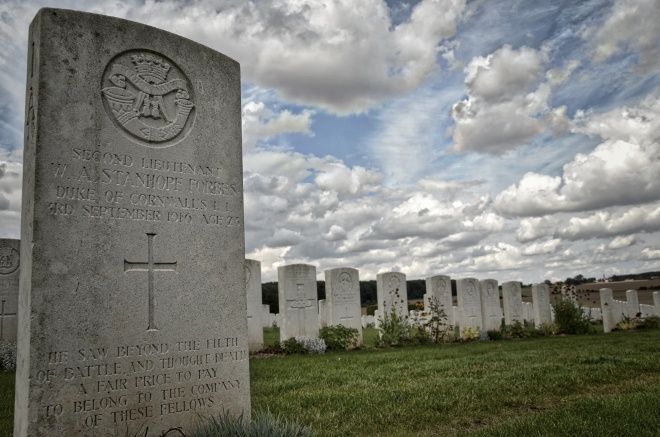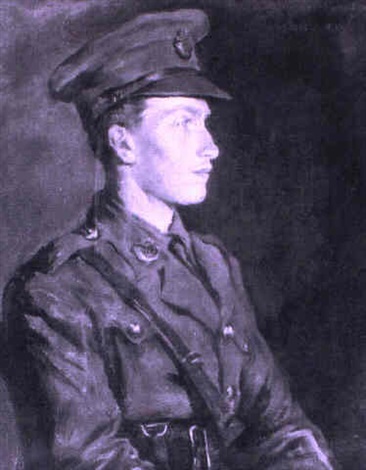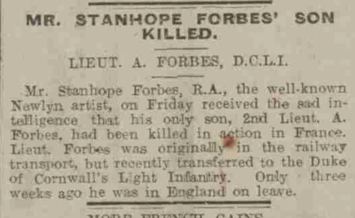Just inside the entrance to Guillemont Road Cemetery is the grave of Second Lieutenant W.A. Stanhope-Forbes of the Duke of Cornwall’s Light Infantry. He was killed in the fighting near Guillemont a century ago on this in day in 1916. I first saw his grave back in the 1980s and the inscription on it has always intrigued me:
He Saw Beyond The Filth of Battle
And Thought Death a Fair Price to Pay
To Belong To the Company of These Fellows
William Alexander Stanhope-Forbes was the son of Stanhope Alexander Forbes, a Royal Academy artist and part of the famous Newlyn School of artists. Over the years I have searched to see if this was something he had copied, but it appears he wrote it himself: for me, perhaps the most moving and profound inscription on any wargrave, anywhere.
William Alexander Stanhope-Forbes began his war as a Railway Transport Officer (RTO): one of his relatives ran the London and Brighton Railway, but his own background was as an architect. His early life had been tragic; he had been ill as a child and his mother had died in 1912. In 1914 he had tried to enlist but was rejected on account of his health but had managed to get the job as an RTO in England, determined to do his bit. But by the summer of 1916 he was posted to the Duke of Cornwall’s Light Infantry and arrived in France on 16th August 1916. He was killed in action going over the top in his first battle only a few weeks later on 3rd September 1916.
William Alexander Stanhope-Forbes lives on at the Architects Association School of Architecture where an annual prize is given in his name, and the inscription on his grave continues to move visitors to the Somme battlefields.



